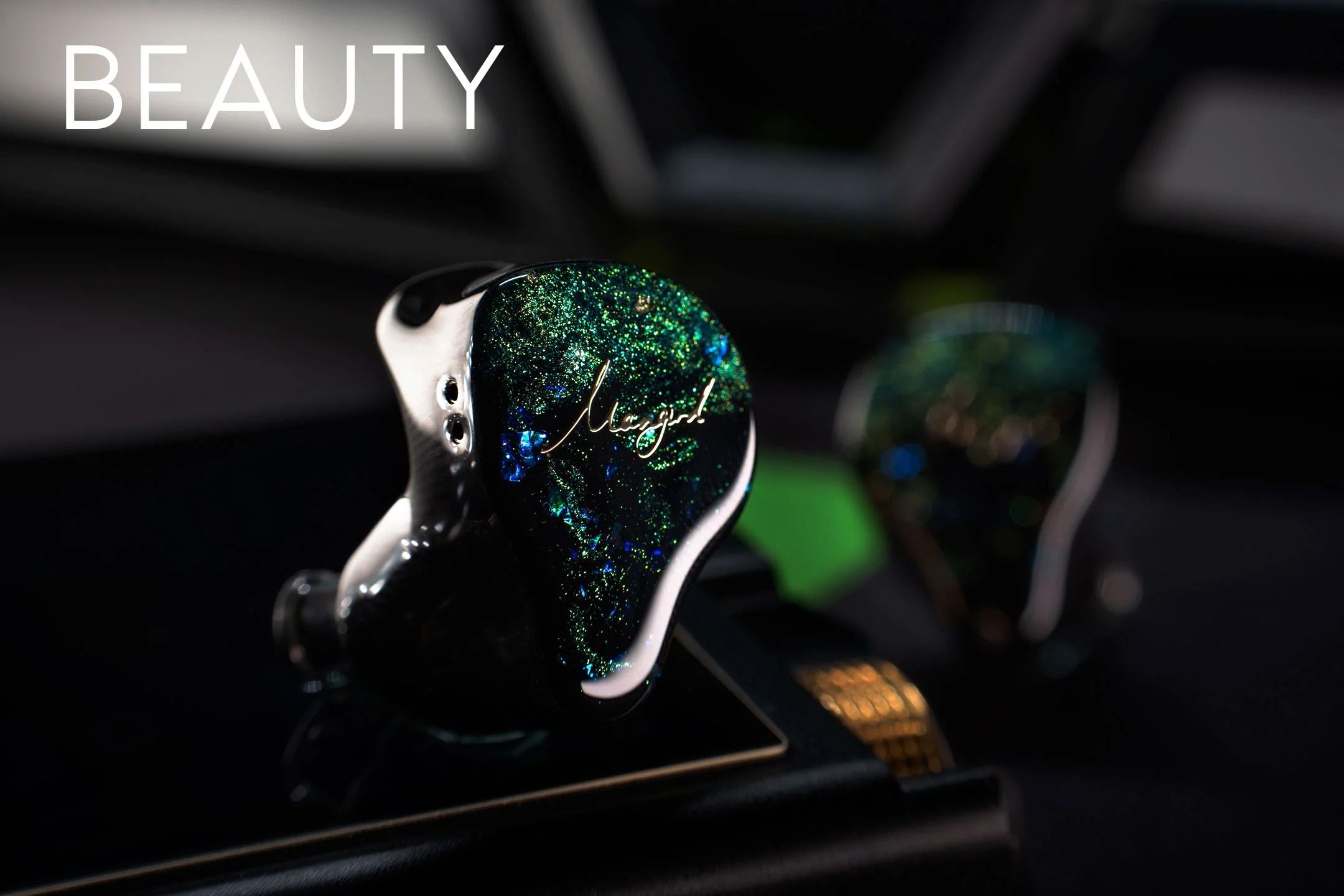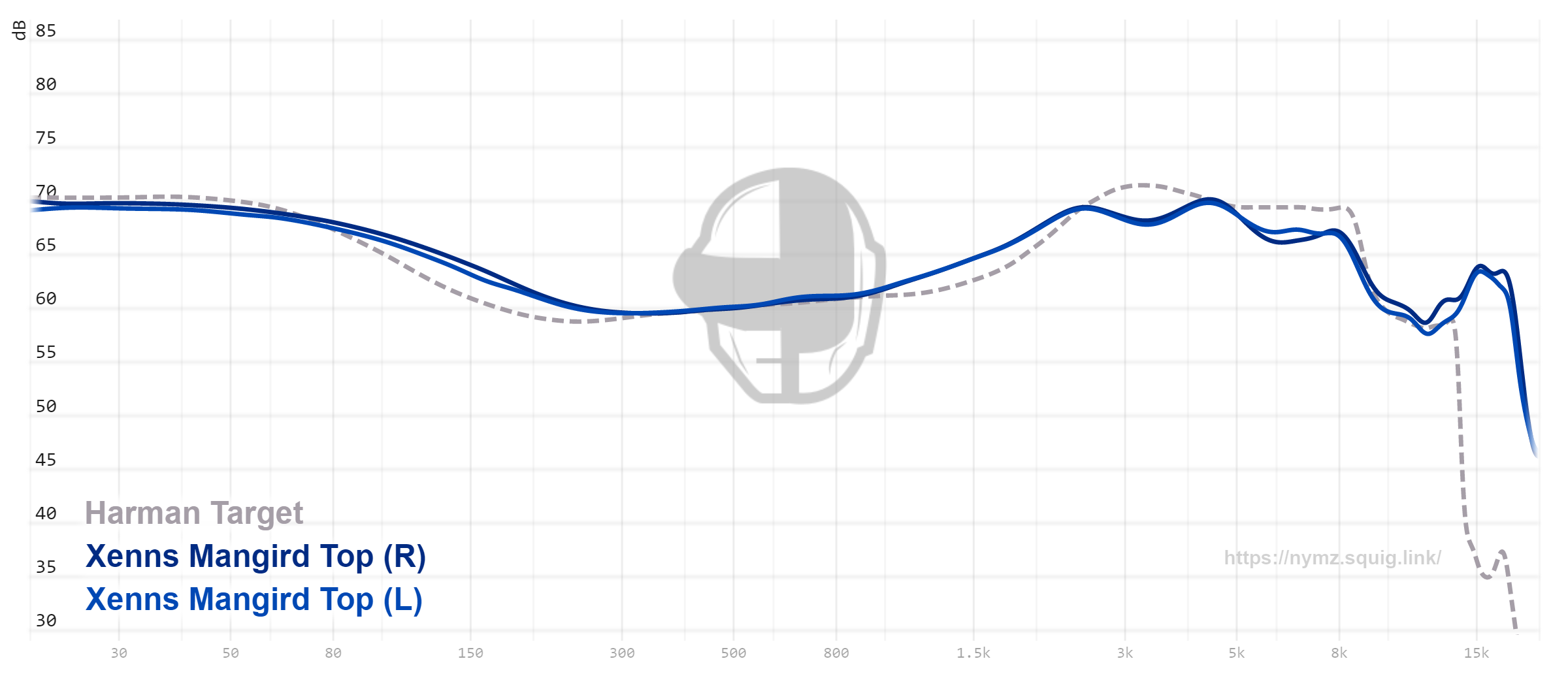
XENNS has been an up-and-comer in the audio world for the last several years. It’s back with its latest release, the XENNS Mangird Top, a gorgeous and driver-packed pair of earphones vying to become one of the best IEMs of 2022. With a whopping nine drivers per earpiece — 18 drivers total — they work hard to justify their $530 cost of entry.
Welcome back to Golden Ears, our semi-regular hifi column where we explore just what you get when you step up to the middle and upper tiers of audio. XENNS has appeared here before with its excellent XENNS Up earphones. The Top takes a different approach, creating its unique sound signature with eight high quality balanced armatures with a large dynamic driver to handle the bass. While I still prefer the XENNS Up, the Top is an excellent entry that may just appeal to even more listeners.
We would like to thank Linsoul for providing the sample for this review.
Specifications
- Current Price: $530 (Amazon, Linsoul)
- Brand: XENNS
- Model: Mangird Top
- Drivers: 1*Dynamic Driver+8*Balanced Armature Drivers
- Plug specification: 0.78 2pin swappable
- Sensitivity: 107±1db
- Impedance: 25Ω
- Frequency response:20-44kHz
XENNS Mangird Top – First Impressions and Key Features
If there’s one thing XENNS knows how to do, it’s create an appealing pair of earphones. I don’t know that there has been a single pair that hasn’t looked the part of a high-end IEM, even when they’ve cost significantly less. It pairs that with great build quality, premium packaging, and a selection of accessories to help justify its cost.

Now, it might seem silly to focus on looks when it comes to an audio product. After all, it’s the sound quality and comfort that matter above all else, right? Well, yes, but one of the things that has become very clear to me in writing this column is that high-end audio also embraces aesthetics. Whether it’s over-ear headphones or in-ear monitors like this, products of a certain caliber need to look the part. It’s one of the ways they differentiate themselves.
The faceplates of each ear piece are almost celestial. It’s a mix of one third green, blue foil with flakes of iridescent color and star-like glitter beneath. A golden Mangird logo is placed right in the center. They’re lookers but aren’t overstated or gaudy.
Beyond that we get into extras, like the cable and carrying case, but we’ll get to those in due course.
Staying on the look and feel for just a moment more, the Top is handcrafted using UV-cured, medical grade resin. It essentially means that the entire unit is one solid piece without anything to break off or separate over time. They’re smooth to the touch and very comfortable in the ear. And while not indestructible, they certainly feel robust and likely to last many years into the future with proper care.

Inside those shells, we have a complex array of different drivers controlled with an electronic crossover to split the frequencies between them. As I mentioned in the introduction, there’s a total of nine drivers per side. This approach allows every driver to focus on a narrow range that it’s been tuned to excel at. No driver (or selection of drivers, in this case) is over-extending itself. This gives XENNS more leeway to tune the Top to its intended sound signature and also reduces the chance for audible distortion. The result is a crystal clear, highly detailed, and impeccably tuned sound.
Here’s how the driver array breaks down:
- A 10mm beryllium-coated dynamic driver handles the bass. 10mm is a fairly standard “large” size for a dynamic driver. The beryllium coating is a premium feature that is costly to implement and so is typically found on expensive headphones and IEMs, of which the Top is certainly one. The coating adds rigidity to the driver, improving its speed, clarity, and overall performance with lower and mid-range frequencies.
- Four E50D balanced armatures operate in pairs for the mid-range frequencies.
- Two Sonion 2600 balanced armatures cover the treble register.
The intended tuning of these earphones is smooth and detailed but not neutral. It’s intended to be “thrilling” and “moving” with a wide soundstage. This typically means that the sound signature has elevated bass to make songs and games sound big and rich, and a high-end that’s elevated to make details clearer to hear and the IEMs higher resolution overall. We’ll get into this more during the listening impressions portion of the article, but it’s a wholesale success that’s just as good for gaming as it is for getting lost in your favorite music.

Returning now to the rest of what you get in the box. XENNS includes a very soft, custom modular cable. It uses a looser braid than anything I’ve used before. It makes it slightly more prone to tangling but is still much better than the majority of wired earphones you’ll find in U.S. department stores. It’s 6N OCC copper single crystal and silver-plated, so has this beautiful silver finish to it. The terminations are gold can be unplugged and swapped between 2.5mm balanced, 3.5mm single-ended, and 4.4mm balanced Pentaconn. There’s also a 6.35mm adapter. A cable like this can easily cost $50 or even $100 aftermarket, and it makes the whole package feel like a better value.
In addition, XENNS includes a nice zippered travel case. It’s too big to be pocketable, but is great for storing the IEMs and all of the accessories. There’s also a selection of silicone and memory foam tips to help you find a comfortable fit. Finally, we have a verification card and a little gold keychain with the Mangird brand name.
Side note: Can we decide on what this brand will be called? XENNS, Mangird… I’m genuinely not sure what the official name is anymore.
XENNS Mangird Top – Fit and Comfort
The XENNS Mangird Top is a UIEM, which stands for Universal In-Ear Monitor. That means that it is designed using data on the shape of a wide range of ear shapes and is molded to match the majority of users. The shape may seem a little odd at first but is designed to nestle into the folds of the ear for a secure fit.
The Top isn’t a small pair of earphones, and I admit to being a little worried about their fit when I took them out. With nine drivers a side, they can’t really afford to be small and the nozzles also seem fairly wide. But the design of the XENNS Top is a testament to the importance of proper tips. With a Medium in my right ear and a Small in my left, theyI’m pleased to say that they actually fit very well with the proper tips. I have decidedly average-sized ears and found them to fit comfortably and securely, even over multi-hour listening and gaming sessions.
XENNS Mangird Top – Listening, Daily Use, and Gaming Impressions
The XENNS Mangird Top are not a difficult set to drive. With a sensitivity of 107dB and an impedance of 25 ohms, they’re able to be driven to acceptable volumes on just about anything. With that in mind, they’re made to scale. I did my listening using a combination of the Fiio K7 desktop DAC/amp hybrid and the Tempotec Sonata HD dongle. I can’t say that there was any big difference between them, so they’re widely compatible and don’t demand listeners invest in expensive additional gear.
At the price of $530, the Mangird Top are expensive earphones compared to virtually every mainstream set out there. They fall into the mid-range of audiophile IEMs, but for most people, I think it’s a reasonable expectation that they should work for just about anything you’ll throw at them. They’re more expensive than a PlayStation 5, after all!
But that’s not how high-end audio works. Every set is tuned differently, which is why there are so many, eac trying different things, or similar things at different price points, all hoping to be that “perfect set” for a particular listener. Working for everything you’ll throw at it, or want it to work for, is going to be different than another listener even while listening to those exact same things. We all have different tastes: more bass or more treble, more spaciousness or a more intimate listening experience, affordability versus technicalities.

Image Credit: Nymz Reviews via Squig.Link
Because of this, audiophiles at this level spend time looking over frequency response graphs like the one above to make sure it will work for their particular taste. They read reviews like this one to educate themselves — and that, reader, is a good idea for all of us.
So what does this graph tell us? First off, that the Top has a U-shaped sound profile with slightly elevated bass and elevated treble. The mid-range is slightly scooped but begins riding again quite quickly. This graph also falls fairly close to the Harman Target, but with a bit more in the upper-mids and a nice rise above 15kHz to add air and spaciousness to the sound. The Harman Target, if you’re not familiar, is a frequency response target based upon the preferences of mainstream listeners. Though it’s not a rule, the Harman Target is a good starting point if you don’t know what you’ll like. The changes here look to add a bit more warmth, smooth upper mids, and more treble energy.
Graphs don’t tell everything, however. It’s important to hear how it actually sounds from multiple listeners. Here is how the Top sounded to me.
Bass: The bass on this set reaches deep. There is plentiful sub-bass for rumble and sub-woofer-like texture. The mid-bass is also elevated so bass guitars and kicks sound outstanding. There is lots of texture to the bass frequencies, which lends them an engrossing tonality. The beryllium dynamic driver is fast, so kick drums have realistic thump and impact. The DD is doing outstanding work here.
The quantity of bass is a step below the XENNS Up, which you may recall I adored. It had a very warm, thumpy sound signature. But, the more time that IEM has spent on the market, it’s clear that it was a bit much for some listeners. This set strikes a great middle ground.
This tuning is excellent for gaming and movies too. There’s cinematic rumble and bold presentation for things like explosions, rolling tank tracks, and swells from the soundtrack.
Great example tracks: Block Out the Noise, D.R.E.A.M., and Never Back Down by Jonny Craig
Mids: Even though the graph indicates a mid scoop, vocals still sound natural — if a touch warm. The early rise into the upper mids also lends mid-range instruments a bit of extra brightness that makes them rise out of the mix. The Monster by Rihanna and Eminem is a perfect example of this as the acoustic guitar just shines out. The mix of acoustic and electric piano in Ghost by Caelin Rivers and River Camille is another standout.
On the rock front, The Disappearing Act by Coheed and Cambria is especially impressive. There’s such a good balance of tones here between the guitars, Claudio’s vocals, the synths, and the drums. With so much going on, it’s easy to lose detail, but the Top is a detail powerhouse, losing nothing in any of these ranges. As a guitarist, I notice a lot within the effects-laden guitar tones of prog rockers like this, and the earphones capture outstanding texture within distorted guitars and the synths. Micro details like fingers on strings come through cleanly in quieter tracks like Pearl of the Stars.
For gaming, this is also an asset. Important details like footsteps and positionality come through very well with these. When it comes to the middle register, I think it’s even more important for realism, atmosphere, and engagement. They’re very, very good in this regard.
Treble: Treble is interesting. I think XENNS did a good job here, and it resonates with my personal tastes very well. The treble rise draws out details and there’s a bit of the etched “BA timbre” here. I like that, personally, but not everyone does. They could also be perceived as being a bit bright, so if you’re sensitive to sparkly highs, that’s something to be aware of here.
The treble tuning also lends these earphones an airiness that adds a better sense of space to the listening experience. This is a boon to gaming for atmosphere and immersion.
Overall, the treble is very well done!

Technical Performance, Soundstage, and Imaging: The coup de grâce: technicalities. At this price, you expect big things and they absolutely deliver. The drivers are very, very capable and render details exceptionally well. I liken this to upgrading from an SD TV to high def, and that holds true here. Another way to put it might be that they remove the veil between you and what you’re listening to; a veil you might not even have been aware of until hearing it gone! The detail retrieval here excels past some of my favorite planar magnetics which are known for exceptional detail, like the Timeless AE (which I’ll be reviewing soon!).
Other technicalities are just as on point. The soundstage is much wider than you would expect from closed back earphones. XENNS has done an excellent job of tuning these to provide that sense of space. Will they compete with open back headphone? No, but no IEM does. Apples to apples, however, these provide one of the wider listening experiences you’ll find at this price and often above.
Layering and imaging is also exceptional. That “high def” listening experience is engendered in large part because the layering is so good. You can hear every single element that makes up your favorite songs and games. Pinpointing where those sounds are coming from is good on a stereo stage. There isn’t as much verticality to the listening experience, but they do a good job of pulling sounds apart and making it clear that they’re coming from different locations in your head stage.
Gaming: If it wasn’t already clear, these are great earphones for gaming. The outstanding details, U-shaped tuning, stellar layering, and wide soundstage absolutely make them one of the best picks at this price for gaming. You don’t need to enable Dolby Atmos with these to compensate for a constrained listening experience. If you do, you’ll gain a bit more positional information, so it’s still worth turning on.

Overall Impressions and Final Thoughts
Overall, the XENNS Mangird Top are an outstanding pair of earphones. Are they a set you can use for anything? For my library, yes, absolutely. I would put them on par with the more expensive XENNS Up, even without the Up’s electrostatic drivers. They’re a great alternative with a bit less bass. I tend to prefer the Up for that reason, but the Top has a better soundstage and is more balanced overall.
I would also choose these over its biggest competitor, the Moondrop Variations. The detail retrieval and soundstage are better, which I didn’t expect going into this article. But here we are with the Top impressing in multiple ways.
As always, there is no perfect earphone. It comes down to library. For my mix of rock, metal, piano and strings, chillstep, and MMO and FPS gaming, it is exceptionally good. With my listening tastes, it could be my one IEM to use for everything, so if my tastes align with your own, it’s a safe bet that you could too.
There’s no doubt: this is an expensive pair of IEMs, but between the excellent audio performance, high quality cable, and very versatile listening experience, they do a great job of justifying their cost. They make the most sense for audiophiles, as products in this category often do, but their ability to game with the best IEMs out there make them a prime candidate to upgrade your listening experience across the board.

The product described in this article was provided by the manufacturer for evaluation purposes. Articles may include affiliate links from which we may earn a small commission to help support the site. Authors do not earn affiliate revenue or commissions.











